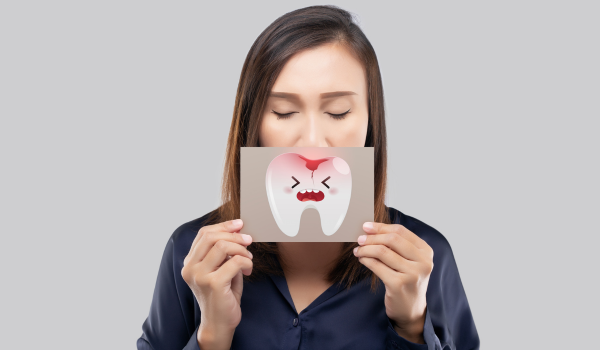.png)
Gingivitis, the mildest form of gum disease, is common and can be easily treated if caught early. However, if neglected, it can progress into more severe gum disease that may result in tooth loss. Fortunately, effective treatments for gingivitis involve a combination of professional care at the dentist’s office and diligent at-home oral hygiene practices. In this article, we will explore the most effective treatments for gingivitis, including professional cleaning by a dentist, proper brushing, flossing, mouthwash use, and other home care methods to improve gum health and prevent further complications.
1. Professional Cleaning at the Dentist’s Office
The first and most essential step in treating gingivitis is professional cleaning, also known as scaling and root planing. This procedure helps remove plaque and tartar buildup that cannot be removed with regular brushing and flossing. Professional cleaning offers the following benefits:
-
Thorough Plaque and Tartar Removal: Over time, plaque hardens into tartar, which cannot be removed by brushing alone. Professional cleaning removes this buildup from the teeth and gums, which is essential in reversing gingivitis.
-
Deep Cleaning of the Gums: Scaling involves scraping off plaque and tartar from the tooth surfaces and below the gumline. This helps reduce inflammation and allows the gums to heal.
-
Root Planing: In some cases, root planing may be required. This involves smoothing out the roots of the teeth to remove rough spots where bacteria tend to accumulate, making it harder for plaque to build up again.
-
Detection of Early Issues: During professional cleanings, your dentist can detect other oral health problems, such as cavities or gum pockets, that may require additional treatment.
A professional cleaning typically takes about 30 minutes to an hour, depending on the severity of the gingivitis. Regular cleanings every 6 to 12 months are necessary to maintain optimal gum health.
2. Proper Brushing Techniques to Prevent Gingivitis
Brushing your teeth properly is one of the most effective ways to prevent and treat gingivitis. Proper brushing removes plaque and food particles that contribute to gum irritation. The key to effective brushing includes:
-
Using the Right Toothbrush: Choose a soft-bristled toothbrush to avoid damaging the gums. A toothbrush with angled bristles can also help clean difficult-to-reach areas along the gumline.
-
Brushing Twice a Day: Brush your teeth at least twice a day—once in the morning and once before bed—to remove plaque buildup. Ensure that you brush for at least two minutes each time, covering all surfaces of your teeth and gums.
-
Using Fluoride Toothpaste: Toothpaste that contains fluoride helps protect against plaque buildup and strengthens enamel. Fluoride also helps prevent cavities and promotes overall oral health.
-
Proper Brushing Technique: Hold the toothbrush at a 45-degree angle to your gums. Gently move the brush back and forth in short strokes, making sure to brush along the gumline where plaque tends to accumulate. Be careful not to brush too hard, as this can irritate the gums and cause them to recede.
By brushing properly and regularly, you can help prevent plaque buildup and reduce the risk of gingivitis.
3. Flossing: A Crucial Step in Gum Health
Flossing is an essential step in any oral hygiene routine, especially for those with gingivitis. Flossing removes food particles and plaque from between the teeth and along the gumline, areas that a toothbrush cannot reach effectively. Here's why flossing is crucial for treating and preventing gingivitis:
-
Removing Plaque from Between Teeth: Flossing helps remove plaque and bacteria from the spaces between your teeth and under the gumline, preventing the buildup of tartar that can lead to gingivitis.
-
Preventing Gum Bleeding: While gums may bleed initially when you start flossing, this is often a sign of inflammation that can improve with consistent flossing. Regular flossing can help reduce bleeding and swelling over time.
-
Improved Oral Health: Flossing daily helps keep the gums healthy by reducing plaque, preventing cavities, and improving overall gum tissue health.
To floss effectively, use about 18 inches of floss and wrap it around your fingers, holding it taut. Gently slide the floss between your teeth and curve it around each tooth in a C-shape, moving it up and down to remove debris. Make sure to floss every day to maintain optimal gum health.
4. The Role of Mouthwash in Treating Gingivitis
Mouthwash can be a helpful addition to your oral hygiene routine, especially for managing gingivitis. It helps rinse away food particles, reduce bacteria, and freshen breath. There are different types of mouthwash available, and choosing the right one can enhance your gingivitis treatment:
-
Antibacterial Mouthwash: Mouthwashes containing antibacterial ingredients, such as chlorhexidine or essential oils (like eucalyptol or thymol), help reduce the bacteria that cause gingivitis. These mouthwashes can help prevent plaque buildup and reduce gum inflammation.
-
Fluoride Mouthwash: Some mouthwashes contain fluoride, which helps strengthen the enamel and protect the teeth from plaque buildup and cavities.
-
Alcohol-Free Mouthwash: If your gums are sensitive or irritated, an alcohol-free mouthwash may be a better option. Alcohol-based mouthwashes can sometimes cause dryness and irritation, whereas alcohol-free versions are gentler on the gums.
To get the most benefit from mouthwash, swish it around your mouth for 30 seconds to one minute after brushing and flossing. Mouthwash should not be used as a substitute for brushing and flossing but rather as an additional tool in your oral care routine.
5. Lifestyle Changes to Support Gum Health
In addition to regular brushing, flossing, and professional dental care, making certain lifestyle changes can significantly improve gum health and help treat gingivitis:
-
Quit Smoking: Smoking is a major risk factor for gum disease, including gingivitis. Quitting smoking improves blood flow to the gums, helps them heal, and reduces the risk of future gum disease.
-
Eat a Healthy Diet: A diet rich in vitamins, particularly vitamin C, helps keep your gums strong and healthy. Include plenty of fruits, vegetables, whole grains, and lean proteins in your diet to support your gum and overall health.
-
Manage Stress: Chronic stress can weaken the immune system and make you more susceptible to gum disease. Practicing stress management techniques such as yoga, meditation, and regular exercise can improve your overall well-being and oral health.
-
Stay Hydrated: Drinking plenty of water throughout the day helps keep your mouth hydrated and reduces the buildup of bacteria and plaque that contribute to gingivitis.
Making these lifestyle changes, along with consistent oral hygiene, can significantly improve gum health and reduce the risk of gingivitis and other oral health issues.
6. When to See a Dentist for Gingivitis Treatment
While gingivitis can be managed at home with proper care, there are times when professional intervention is necessary. You should see a dentist if:
-
Gums Bleed Regularly: If your gums continue to bleed despite regular brushing and flossing, it may be a sign of advanced gingivitis or periodontitis that requires professional cleaning and treatment.
-
Persistent Gum Inflammation: If your gums remain swollen, red, or painful despite maintaining good oral hygiene, it’s time to consult a dentist.
-
Bad Breath or Taste: Persistent bad breath or an unpleasant taste in your mouth could indicate a more serious gum infection that requires professional care.
Early intervention by a dentist can help prevent gingivitis from progressing into more severe gum disease, ensuring that you maintain healthy gums and teeth.
.png)
.png)
.png)
.png)
.png)
.png)
.png)
.png)
.png)



